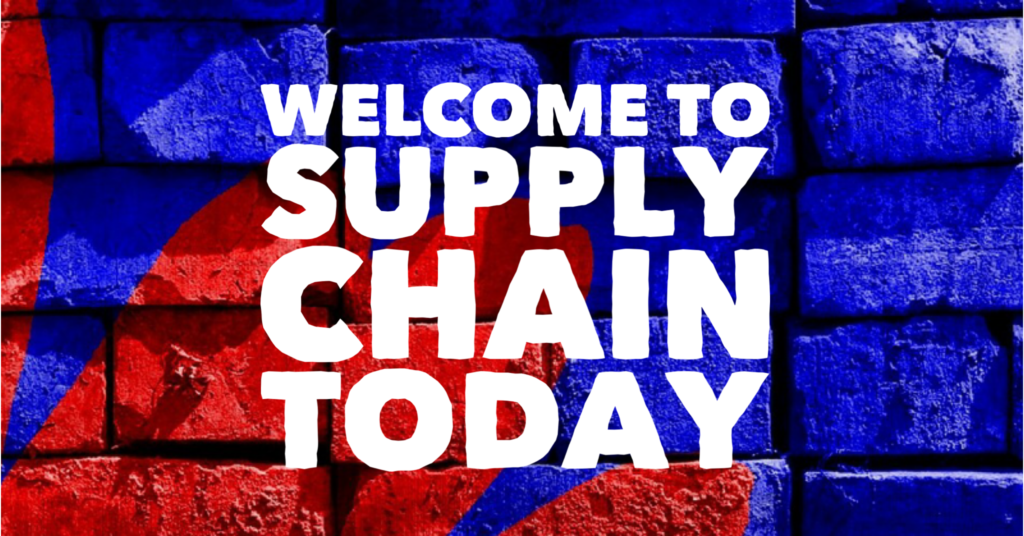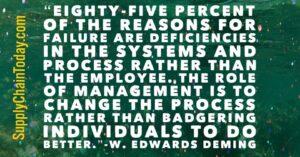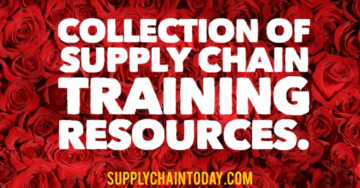
A supply chain control tower is a centralized management system that helps organizations oversee and optimize the various elements of their supply chain. The goal of a supply chain control tower is to improve efficiency and reduce costs by providing real-time visibility into the various processes and activities that make up an organization’s supply chain. This includes things like transportation, warehousing, inventory management, and distribution. A supply chain control tower can use a variety of technologies, such as advanced analytics, machine learning, and automation, to monitor and optimize supply chain operations in real time. By doing so, organizations can improve their responsiveness to changing market conditions and customer demand, and better manage risk and uncertainty in their supply chain.
A supply chain control tower typically includes a range of features and capabilities that help organizations manage their supply chain effectively. These can include:
- Real-time visibility: A supply chain control tower provides a single, centralized view of all the processes and activities that make up an organization’s supply chain. This can include things like transportation, warehousing, and distribution. By providing real-time visibility into these processes, organizations can better understand where bottlenecks are occurring, identify opportunities for improvement, and respond quickly to changing market conditions and customer demand.
- Advanced analytics: A supply chain control tower often includes advanced analytics capabilities, such as machine learning and predictive modeling, to help organizations make more informed decisions about their supply chain. These tools can help organizations forecast demand, optimize their inventory, and identify potential risks and disruptions.
- Automation: A supply chain control tower may also include automation tools to help organizations streamline their supply chain operations. This can include things like automated routing and scheduling, as well as automated procurement and supplier management. By automating routine tasks, organizations can reduce the risk of errors and improve efficiency.
- Collaboration: A supply chain control tower can also help organizations collaborate more effectively with their partners and suppliers. This can include features like shared dashboards and collaboration tools to help organizations work more closely with their trading partners to optimize their supply chain.
Advantages and Disadvantages of a Control Tower.
There are a number of potential benefits to using a supply chain control tower, including:
- Improved visibility: A supply chain control tower provides a single, centralized view of all the processes and activities that make up an organization’s supply chain. This can help organizations better understand where bottlenecks are occurring, identify opportunities for improvement, and respond quickly to changing market conditions and customer demand.
- Enhanced efficiency: By automating routine tasks and using advanced analytics and machine learning to optimize their operations, organizations can improve efficiency and reduce costs in their supply chain.
- Better collaboration: A supply chain control tower can help organizations collaborate more effectively with their partners and suppliers, which can help improve the overall performance of their supply chain.
- Risk management: A supply chain control tower can also help organizations manage risk and uncertainty in their supply chain. For example, by providing real-time visibility into potential disruptions or delays, organizations can take steps to mitigate these risks and avoid costly delays.
There are also some potential drawbacks to using a supply chain control tower, including:
- Complexity: Setting up and maintaining a supply chain control tower can be complex and require significant investment in technology and resources.
- Dependence on technology: A supply chain control tower relies on a range of technologies, such as advanced analytics and automation, to function effectively. If these technologies fail or are not used properly, it can disrupt the performance of the supply chain control tower.
- Resistance to change: Some organizations may resist implementing a supply chain control tower due to concerns about the cost and complexity of implementing such a system, as well as the potential for disruptions to their existing processes and systems.
Overall, the benefits of using a supply chain control tower can outweigh the drawbacks for organizations that are looking to improve the efficiency and effectiveness of their supply chain operations.
Cost Savings: SCM Control Tower
A supply chain control tower can help organizations save costs in a number of ways. Some examples include:
- Improved efficiency: By automating routine tasks and using advanced analytics and machine learning to optimize their operations, organizations can reduce the time and resources required to manage their supply chain. This can lead to cost savings in areas such as transportation, warehousing, and distribution.
- Reduced waste: A supply chain control tower can help organizations reduce waste by providing real-time visibility into their operations and identifying inefficiencies or areas for improvement. For example, by using analytics to optimize their inventory levels, organizations can reduce the amount of excess inventory they carry, which can save on storage and carrying costs.
- Better collaboration: A supply chain control tower can help organizations collaborate more effectively with their partners and suppliers, which can lead to cost savings through improved coordination and reduced errors.
- Risk management: A supply chain control tower can also help organizations manage risk and uncertainty in their supply chain, which can help reduce the costs associated with disruptions or delays. For example, by providing real-time visibility into potential disruptions, organizations can take steps to mitigate these risks and avoid costly delays.
- SEO Powered Content & PR Distribution. Get Amplified Today.
- Platoblockchain. Web3 Metaverse Intelligence. Knowledge Amplified. Access Here.
- Source: https://www.supplychaintoday.com/what-is-a-supply-chain-control-tower/
- a
- About
- activities
- advanced
- All
- amount
- analytics
- and
- areas
- associated
- Automated
- automating
- Automation
- benefits
- Better
- capabilities
- carry
- carrying
- centralized
- chain
- change
- changing
- closely
- collaborate
- collaboration
- complex
- complexity
- Concerns
- conditions
- control
- Control Tower
- coordination
- Cost
- cost savings
- Costs
- customer
- decisions
- delays
- Demand
- Disrupt
- disruptions
- distribution
- doing
- drawbacks
- effectively
- effectiveness
- efficiency
- elements
- Errors
- example
- examples
- existing
- FAIL
- Features
- Forecast
- function
- goal
- help
- helps
- HTTPS
- identify
- identifying
- implementing
- improve
- improved
- improvement
- in
- include
- includes
- Including
- informed
- inventory
- Inventory Management
- investment
- IT
- lead
- learning
- levels
- looking
- machine
- machine learning
- make
- manage
- management
- Market
- market conditions
- Mitigate
- modeling
- Monitor
- more
- number
- Operations
- opportunities
- Optimize
- organizations
- overall
- partners
- performance
- plato
- Plato Data Intelligence
- PlatoData
- potential
- processes
- properly
- provides
- providing
- quickly
- range
- real
- real-time
- reduce
- Reduced
- require
- required
- Resources
- Respond
- Risk
- risks
- Save
- Savings
- setting
- shared
- significant
- single
- So
- some
- Steps
- storage
- streamline
- such
- suppliers
- supply
- supply chain
- system
- Systems
- Take
- tasks
- Technologies
- Technology
- The
- their
- things
- Through
- time
- to
- tools
- Tower
- Trading
- transportation
- typically
- Uncertainty
- understand
- use
- variety
- various
- View
- visibility
- Warehousing
- Waste
- ways
- What
- What is
- which
- Work
- zephyrnet












